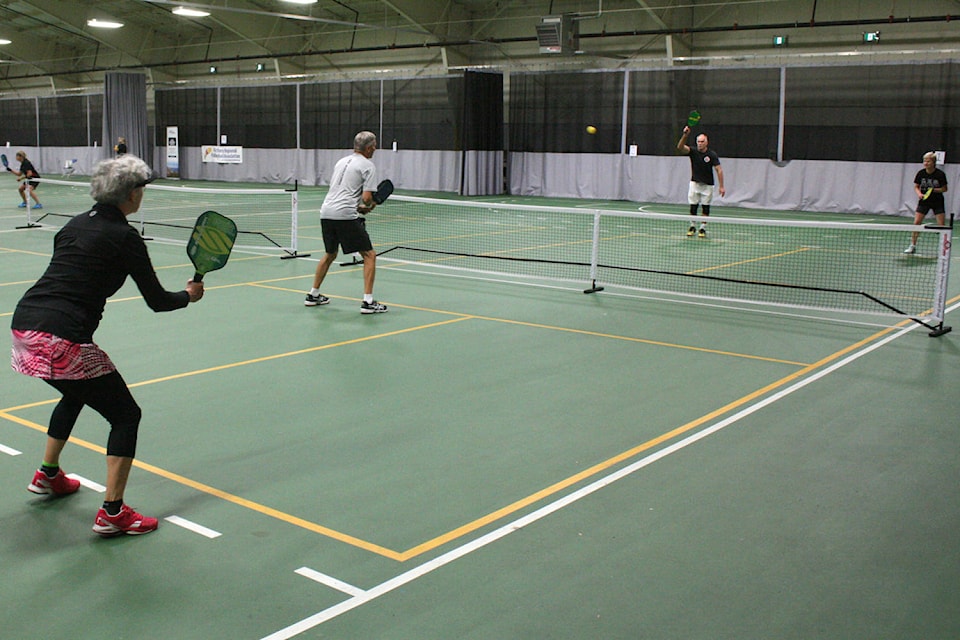A new report calls on Saanich to make its recreational facilities more accessible to accomodate its aging population.
B��Ԫ������ַ�To ensure social and physical accessibility, structural upgrades and equipment are needed in centres, parks and trails,B��Ԫ������ַ� the report reads. B��Ԫ������ַ�The requirement for more social gathering spaces in the recreation centres and parks will continue to grow as the population ages.B��Ԫ������ַ�
This finding is among several that appear in the final report of the Older Adult Strategy and Implementation Plan. It calls on the municipalitity to spend more than $600,000 between 2018 and 2022 to implement various measures clustered around four strategic priorities: programming; age-friendly spaces; collaboration; and communication.
Drawing on a wide range of primary and secondary sources, the report tries to paint a diverse picture of SaanichB��Ԫ������ַ�s senior population, which has B��Ԫ������ַ�steadily increasedB��Ԫ������ַ� since the municipalityB��Ԫ������ַ�s Active Active Strategy published in 2004. According to the 2016 Census, the share of the population aged 65 and older in Saanich increased to 20.8 per cent. This figure increases to 28 per cent, when the cohort aged 60-64 (7.2 per cent) is added. Overall, the 2016 census recorded more adults aged 65 years and older, than children 14 years of age and younger.
But if this development sounds familiar, the report says SaanichB��Ԫ������ַ�s aging society will also be a more diverse society, as adults live more active, longer lives that require a different lens on aging. Among other points, the report challenges the often heard claim that all seniors are wealthy.
The latest data available in the 2011 Census notes that 14 per cent of all adults in British Columbians aged 65 and older live in poverty, as measured by Low Income Cut-off measures (LICO). It measures a personB��Ԫ������ַ�s capacity to afford to pay for basic needs.
B��Ԫ������ַ�This figure expands to 29 per cent if we include those who are living alone or with non-relatives, far higher than those living with family,B��Ԫ������ַ� it notes. B��Ԫ������ַ�Also, if we consider only older adult women who are living alone, this percentage climbs to 34 per cent.B��Ԫ������ַ�
Accordingly, the report calls for changes that reflect the physical, cognitive and social realities of aging. B��Ԫ������ַ�Our priority for programming is to offer a continuum of choice to older adults as they experience physical and cognitive changes, a need for affordable programs and an increased need for social connections,B��Ԫ������ַ� it reads.
Specifically, the report says it is B��Ԫ������ַ�necessaryB��Ԫ������ַ� for Saanich to review its fees and charges policy as a larger number of adults will become eligible for reduced admission rates. B��Ԫ������ַ�Pricing for programs and services will need to take into account lower incomes and low rentals fees which support the desire for groups to self-organize,B��Ԫ������ַ� it reads.
The report also calls on the municipality to ensure that B��Ԫ������ַ�appropriate Saanich indoor and outdoor spaces are welcoming, universally accessible and recognized as places of community and social connection.B��Ԫ������ַ� Accordingly, the report hopes to B��Ԫ������ַ�change the common perception of recreation centres as exclusively for the young and offering only sport and tness, to being recognized as community centres for social interaction, inclusive and inviting to older adults.B��Ԫ������ַ�
This promise takes on added urgency against the backdrop of findings that show about about 25 per cent of local seniors live alone. B��Ԫ������ַ�This leads to a higher risk of social isolation accompanied by increased likelihood of compromised long-term health,B��Ԫ������ַ� it read.
Saanich council was set to receive the report at its scheduled meeting Monday evening. Work on the report began in 2016 and included extensive community input over the course of 10 months. B��Ԫ������ַ�We heard from 2,284 persons, including 980 respondents in two public surveys and 62 engagements involving 1,304 participants in focus groups, world cafés, interviews, booths and sounding boards at special events, libraries and malls,B��Ԫ������ַ� it read.



